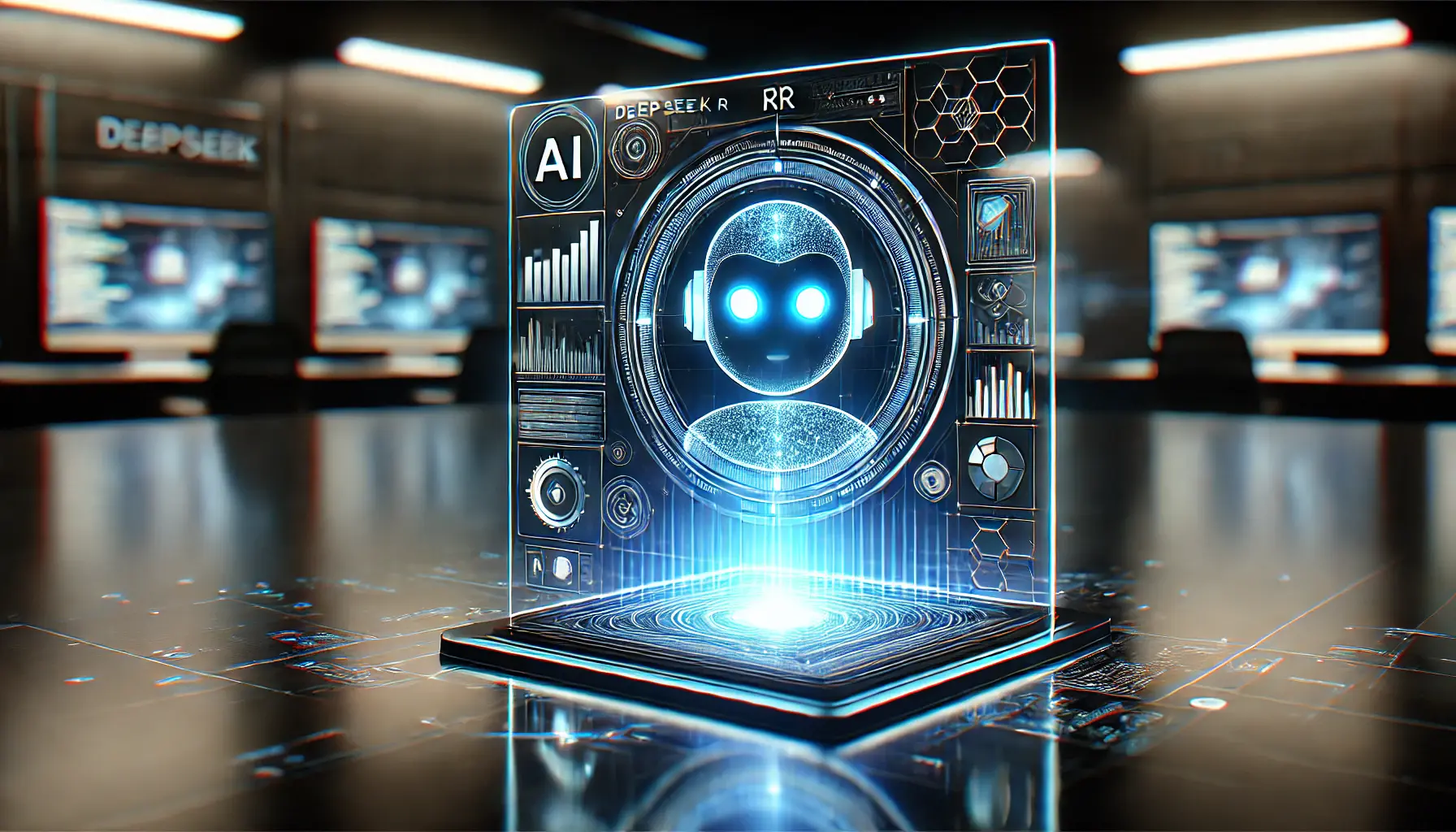With the advent of developments in today’s modern age of digitization, AI integrated into customer interaction is a game-changer.
As a huge advancement in this respect, DeepSeek R1, an open-source AI model, is making waves in the tech community.
If you need to build intelligent chatbots that can perceive and respond to user queries with astonishingly high accuracy, DeepSeek R1 is a promising solution.
Before going into the development of applications based on DeepSeek R1, one needs to understand what DeepSeek R1 brings to the table.
This model is designed for advanced reasoning and can perform exceptionally well for complex tasks like mathematical problem-solving and coding assistance.
Unlike some proprietary models, DeepSeek R1 is open-source, allowing developers like you to modify and implement the code freely within your projects.
- Key Differences Between DeepSeek R1 and Other AI Models
- Setting Up DeepSeek R1 for Chatbot Development
- Designing Effective Chatbot Conversations with DeepSeek R1
- Advanced Features of DeepSeek R1
- Testing and Deploying Your DeepSeek R1-Powered Chatbot
- Final Thoughts on Developing Chatbots with DeepSeek R1
- DeepSeek R1: Frequently Asked Questions
Key Differences Between DeepSeek R1 and Other AI Models
- Real-time Web Search vs. Static Knowledge: DeepSeek R1 can retrieve real-time information from the web for more accurate responses. In contrast, some models may not have direct web search capabilities, relying instead on static datasets.
- Open-Source vs. Proprietary: Being open-source, DeepSeek R1 fosters community-driven improvements and innovation. This contrasts with proprietary models that may require paid access and have restricted modification rights.
- Efficiency in Training: DeepSeek R1’s training process is optimized to be more cost-effective while maintaining high accuracy. This makes it more efficient and accessible to a larger number of developers and organizations.
- Language and Regional Focus: DeepSeek R1 has a strong focus on Chinese-language AI development, making it particularly beneficial for users in China and surrounding regions. However, its support for multiple languages extends its versatility to global applications.
Understanding these differences gives you a clear idea of how DeepSeek R1 stands out in the crowded AI landscape.
This model combines superior reasoning capabilities, open-source accessibility, and an optimized training process, making it a compelling choice for developing intelligent chatbots.
DeepSeek R1 stands out with its real-time web search, open-source accessibility, and optimized training process, making it a unique choice for developers.
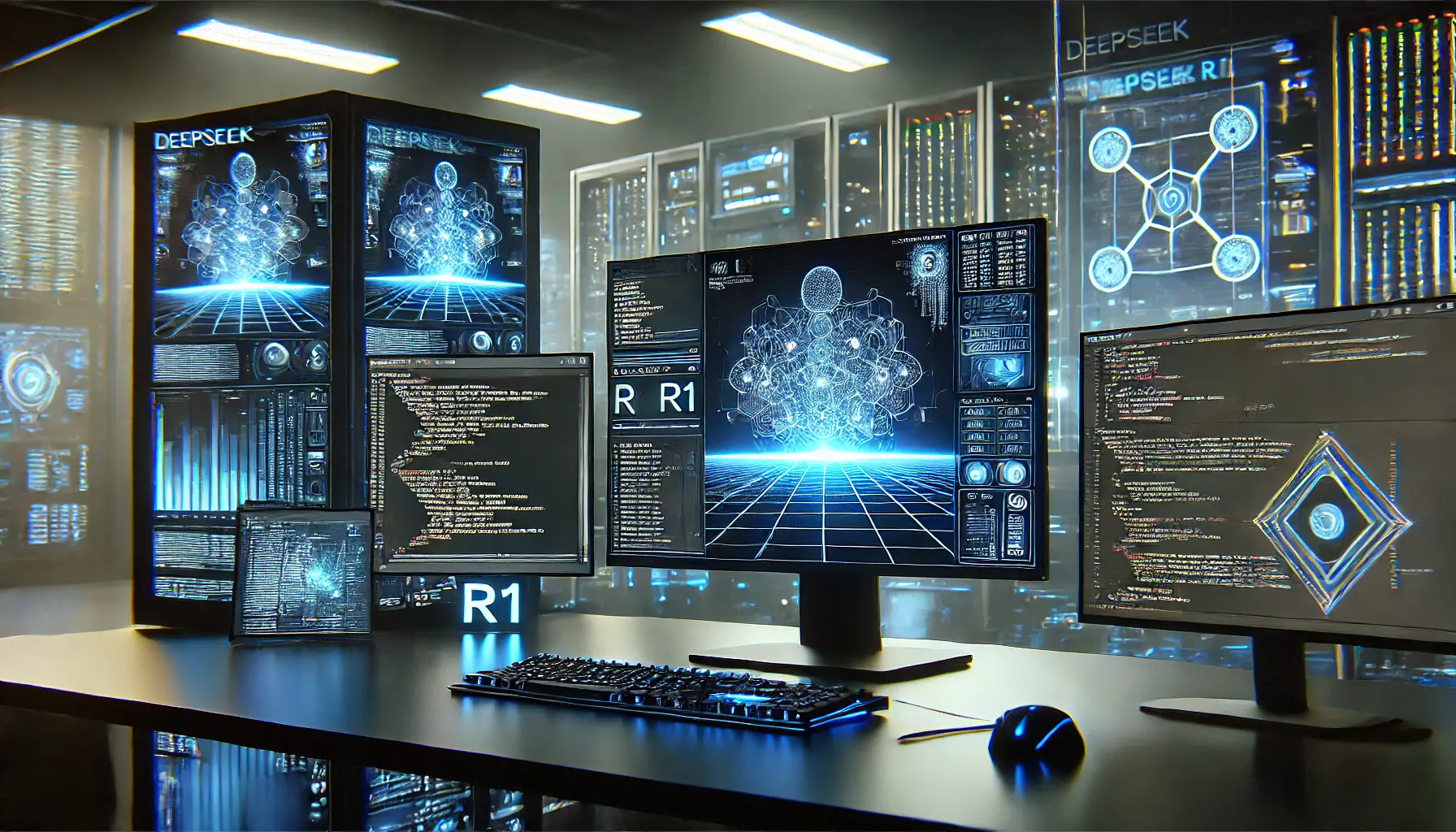
A futuristic AI development setup for configuring DeepSeek R1 chatbots.
Setting Up DeepSeek R1 for Chatbot Development
Embarking on the journey to develop intelligent chatbots with DeepSeek R1 requires a well-prepared environment.
Let’s delve into the system requirements and the steps to configure your development setup effectively.
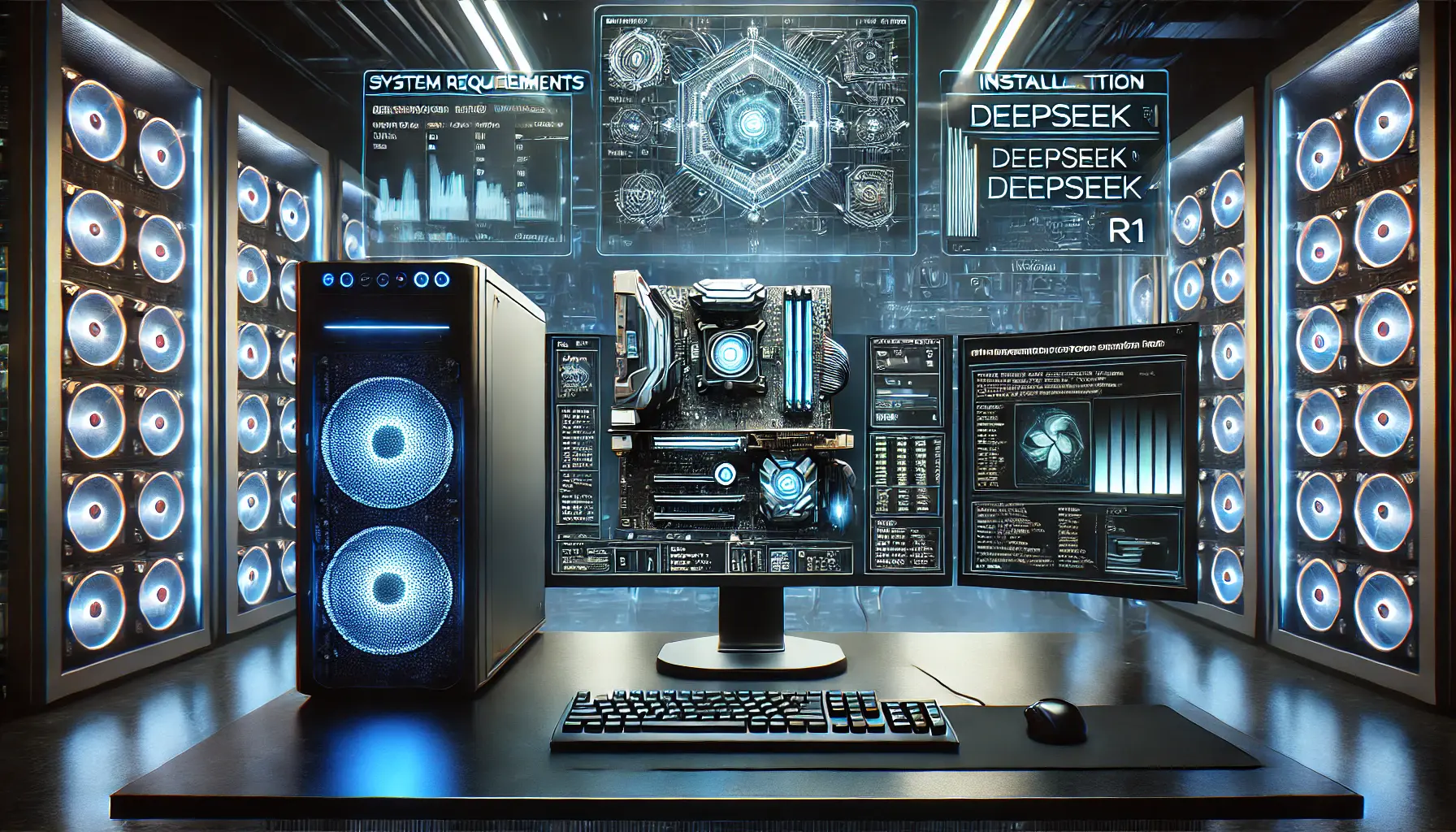
An advanced AI development setup showcasing the system requirements and installation process for DeepSeek R1.
System Requirements and Installation
Before installing DeepSeek R1, ensure your system meets the necessary hardware and software prerequisites:
- CPU: A multi-core processor, with a quad-core or higher recommended for optimal performance.
- GPU: For AI tasks, a high-performance GPU is essential. NVIDIA GPUs with CUDA support are typically required. Running the full-size DeepSeek R1 model may require a GPU with high VRAM, such as the NVIDIA A100.
- RAM: A minimum of 32 GB is recommended for inference tasks, while 64 GB is preferred for fine-tuning processes.
- Storage: An SSD with at least 50 GB of free space is necessary to accommodate Docker images and model weights.
- Software Dependencies: Ensure the installation of Python 3.8 or later, Docker (with NVIDIA support), and the CUDA Toolkit for GPU acceleration.
Once your system aligns with these requirements, proceed with the following installation steps:
- Install Docker: Download and install Docker from the official website. Ensure that NVIDIA support is enabled for GPU utilization.
- Set Up Python Environment: Install Python 3.8 or later. It is recommended to create a virtual environment to manage dependencies efficiently.
- Clone DeepSeek R1 Repository: Access the official DeepSeek R1 repository on GitHub and clone it to your local system.
- Install Required Python Packages: Navigate to the cloned directory and install the necessary Python packages using the provided requirements file.
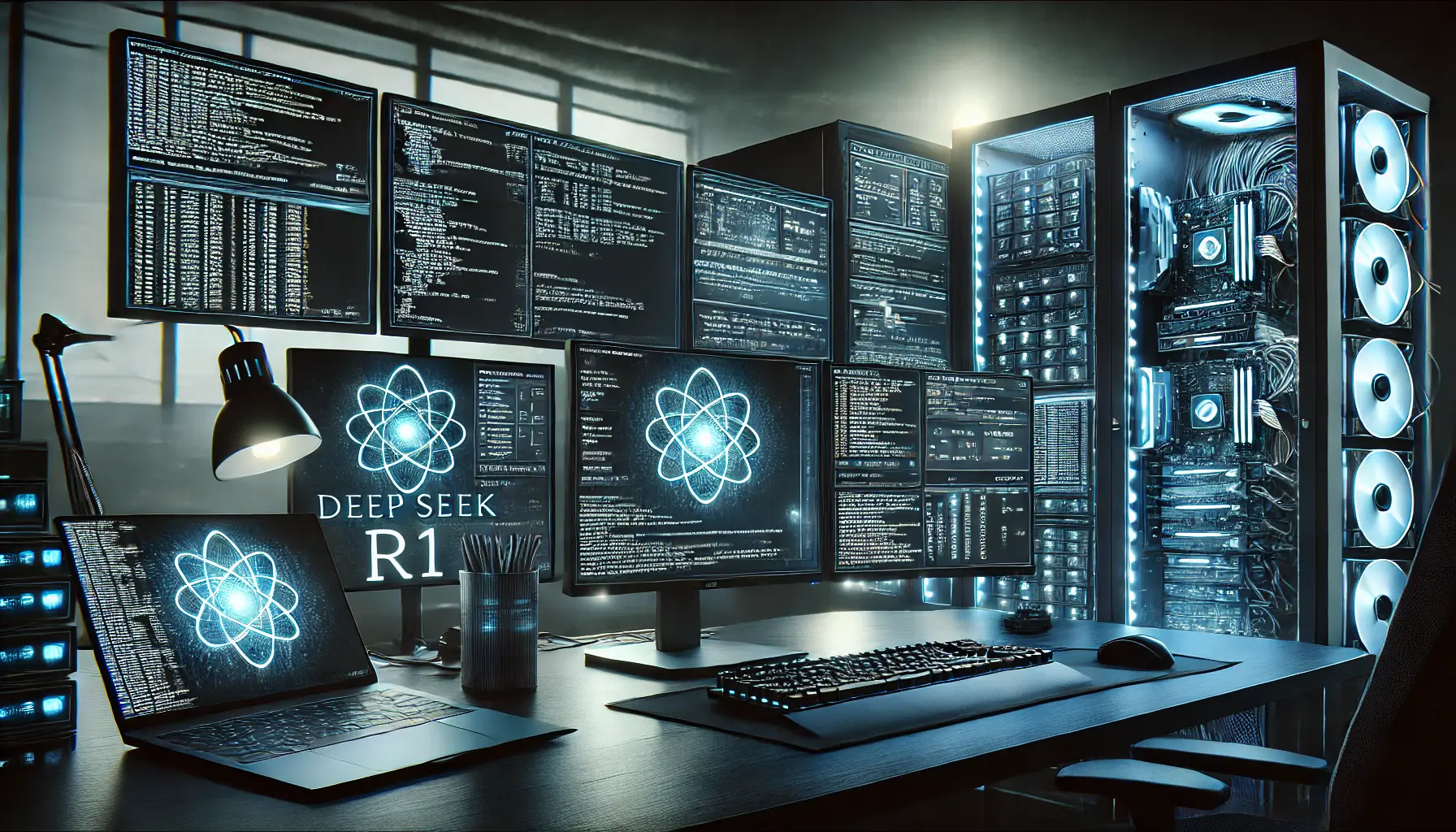
A high-tech AI development setup for configuring DeepSeek R1.
Configuring the Development Environment
With the base setup ready, configure your development environment to integrate DeepSeek R1 seamlessly:
- Set Environment Variables: Define essential environment variables, such as paths to model weights and configuration files, to ensure the application locates all necessary resources.
- Docker Container Configuration: Utilize Docker to create an isolated environment for running DeepSeek R1. This approach maintains consistency across different development stages and significantly reduces dependency issues.
- Testing the Installation: Perform initial tests to ensure that DeepSeek R1 works as expected within your setup. Detecting configuration issues early saves time and prevents complications during later development stages.
By following these steps meticulously, you will establish an ideal environment for developing intelligent chatbots powered by DeepSeek R1.
This setup ensures your system is optimized for performance, allowing you to experience a smooth and efficient chatbot development process.
Before diving into chatbot development, ensure your system meets DeepSeek R1’s hardware and software prerequisites to avoid performance issues.

A high-tech chatbot interface powered by DeepSeek R1 engaging in intelligent conversation.
Designing Effective Chatbot Conversations with DeepSeek R1
Creating a chatbot that engages users effectively requires a deep understanding of user intent and context.
With DeepSeek R1, you have a powerful tool to design conversations that are both intuitive and responsive.
Let’s explore how to harness its capabilities to craft meaningful interactions.
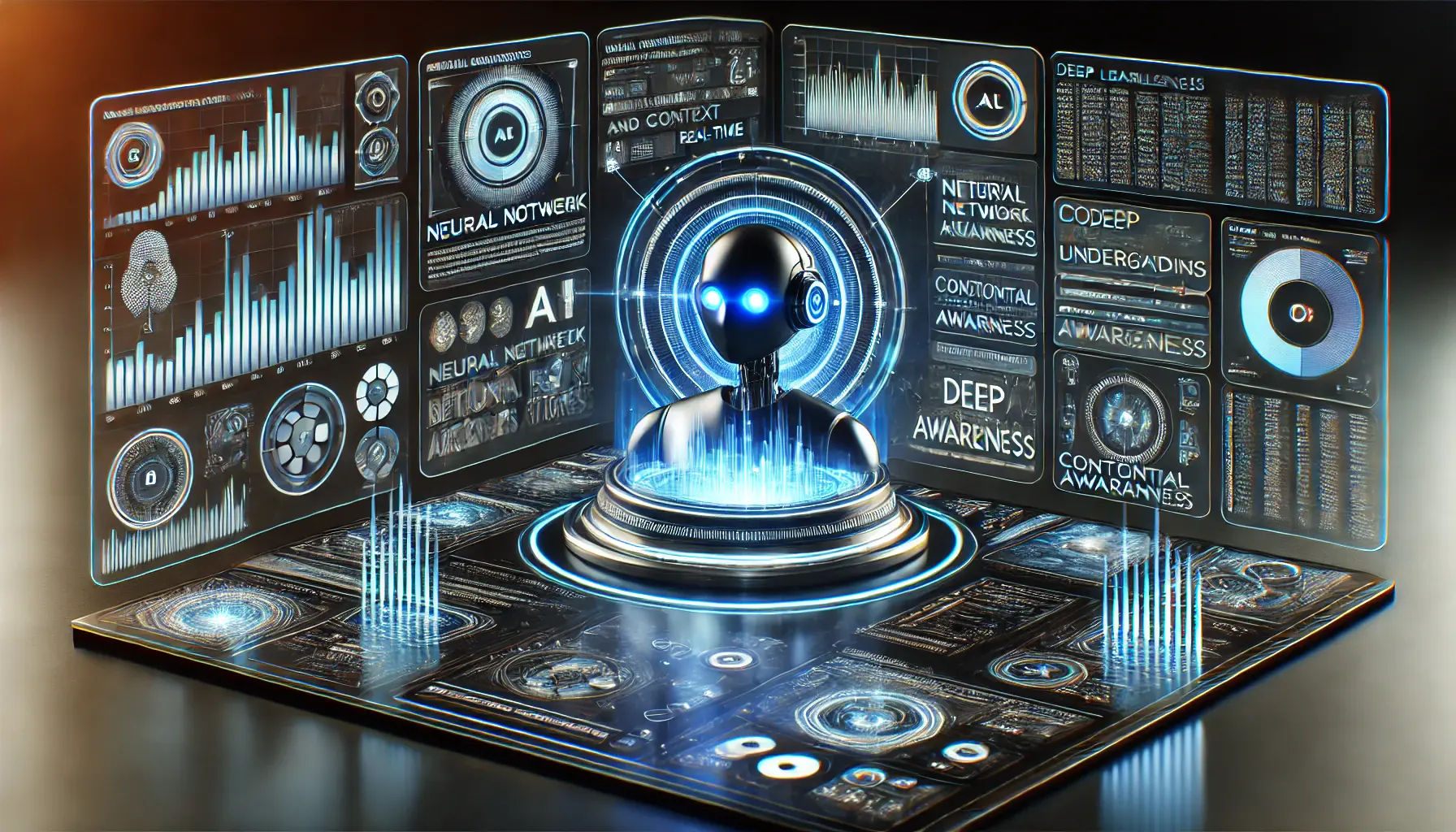
An intelligent chatbot interface interpreting user intent and context with advanced AI processing.
Understanding User Intent and Context
To design effective chatbot conversations, it’s important to understand the subtleties of what users intend to communicate and in what context.
This involves:
- Analyzing User Queries: Break down user inputs into essential intent for each message received to provide precise and relevant responses.
- Maintaining Contextual Awareness: The chatbot should retain context from previous interactions to ensure logical and contextually relevant answers.
- Handling Ambiguities: Develop strategies for dealing with ambiguous queries, such as asking clarifying questions to better understand user needs.
DeepSeek R1 can interpret even complex user inputs, making it highly effective at understanding and responding to various types of queries.
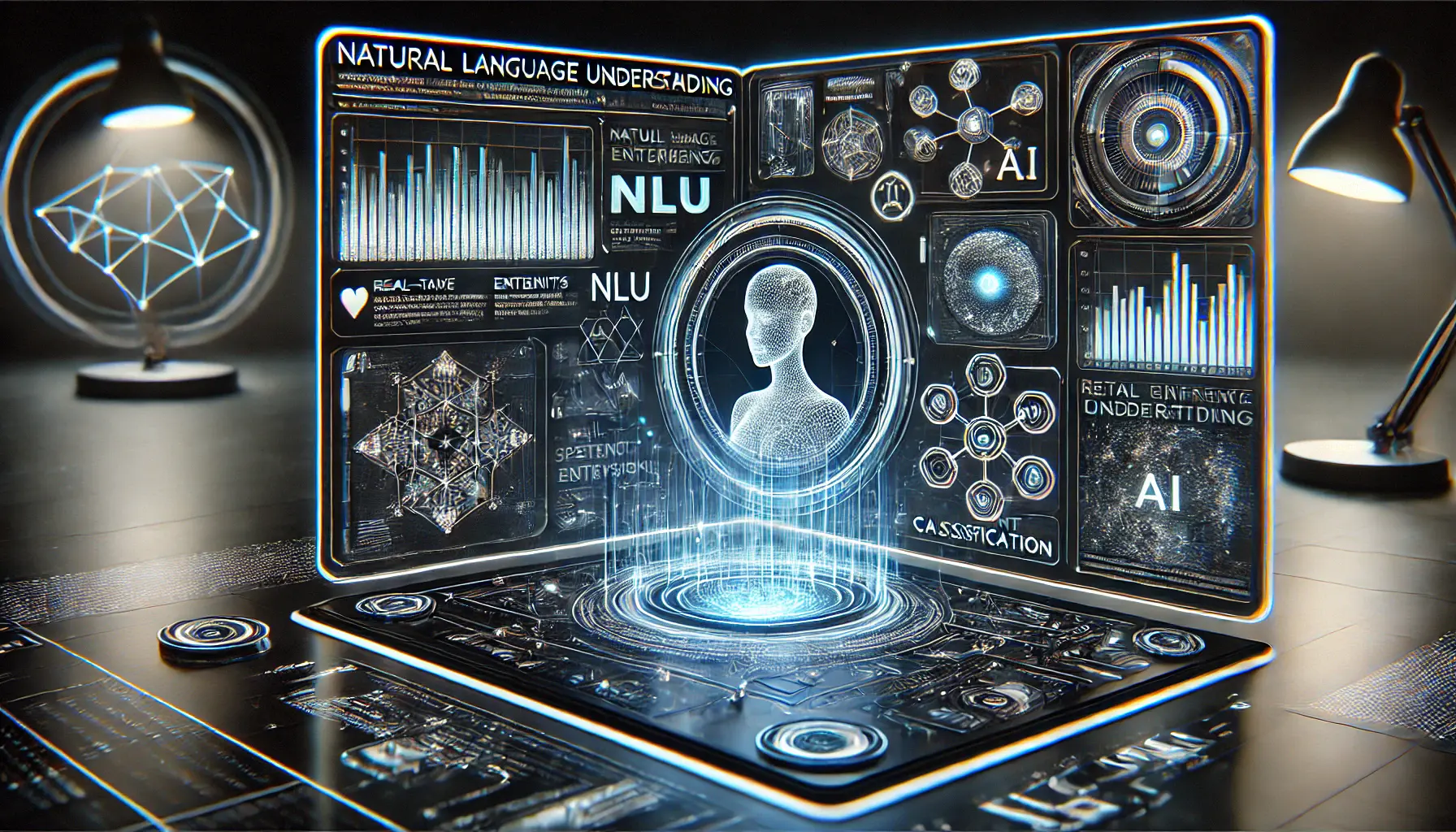
An advanced AI system demonstrating Natural Language Understanding (NLU) in real-time.
Implementing Natural Language Understanding
Natural Language Understanding (NLU) is at the core of every chatbot’s interaction.
To implement NLU with DeepSeek R1:
- Training the Model: Train DeepSeek R1 on domain-specific data to enhance its understanding of industry-specific terms and terminology.
- Entity Recognition: Equip the chatbot to identify key entities from user inputs, such as dates, names, or product specifications.
- Intent Classification: Develop mechanisms for accurate intent classification, enabling the chatbot to route conversations effectively.
With the help of DeepSeek R1, you can build a chatbot that not only understands user inputs but also engages in contextually relevant conversations.
Incorporating these strategies will ensure your chatbot provides a seamless user experience, effectively meeting user needs while improving overall satisfaction.
Understanding user intent and maintaining contextual awarenessThe ability of a chatbot or AI system to retain and use information from previous interactions to generate relevant responses. are critical in building chatbots that engage and satisfy users effectively.
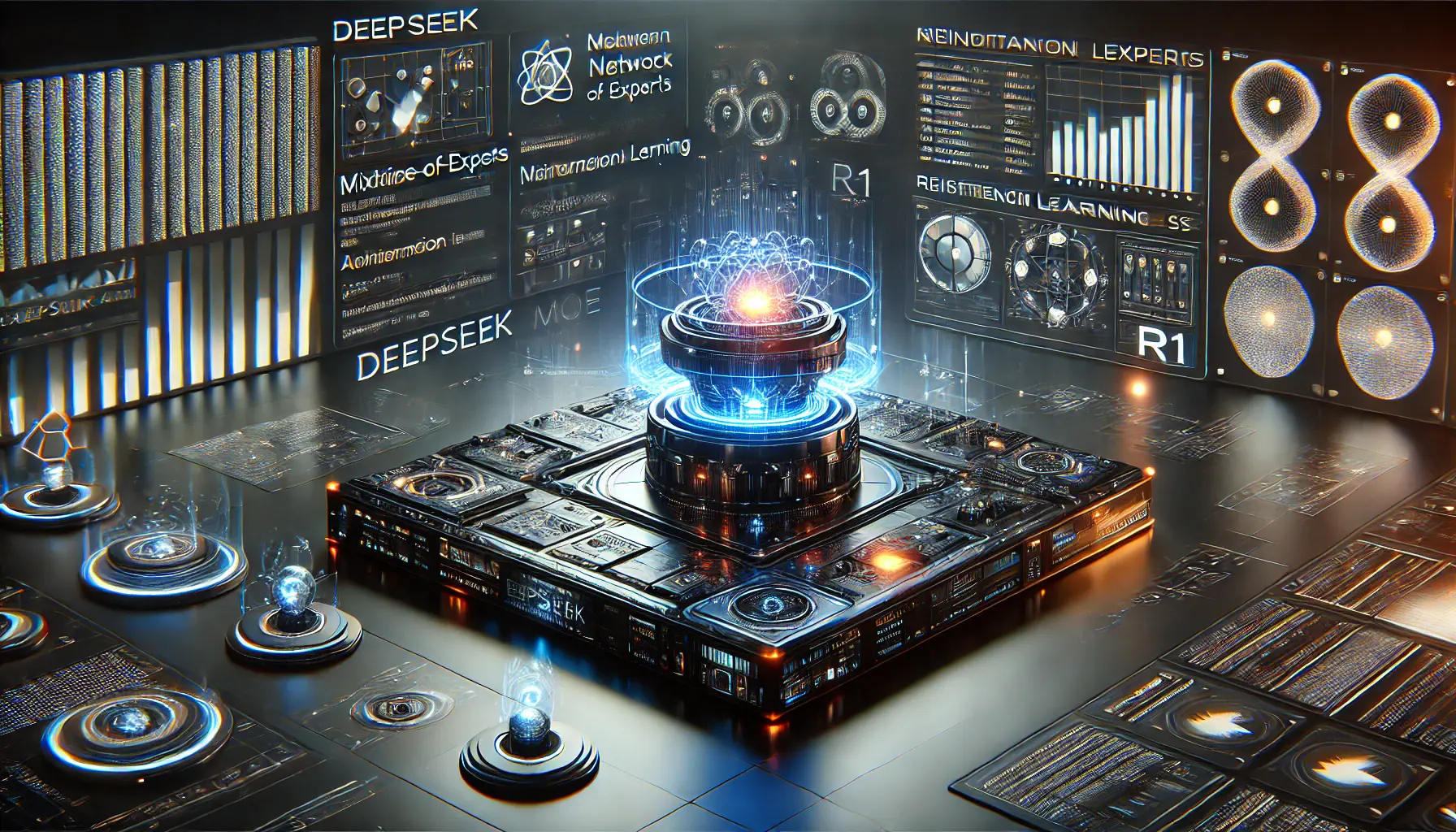
An AI-driven system highlighting the advanced features of DeepSeek R1.
Advanced Features of DeepSeek R1
DeepSeek R1 stands out in the AI landscape due to its innovative features that enhance chatbot development.
Let’s delve into these advanced capabilities and understand how they can be leveraged to create more intelligent and efficient chatbots.
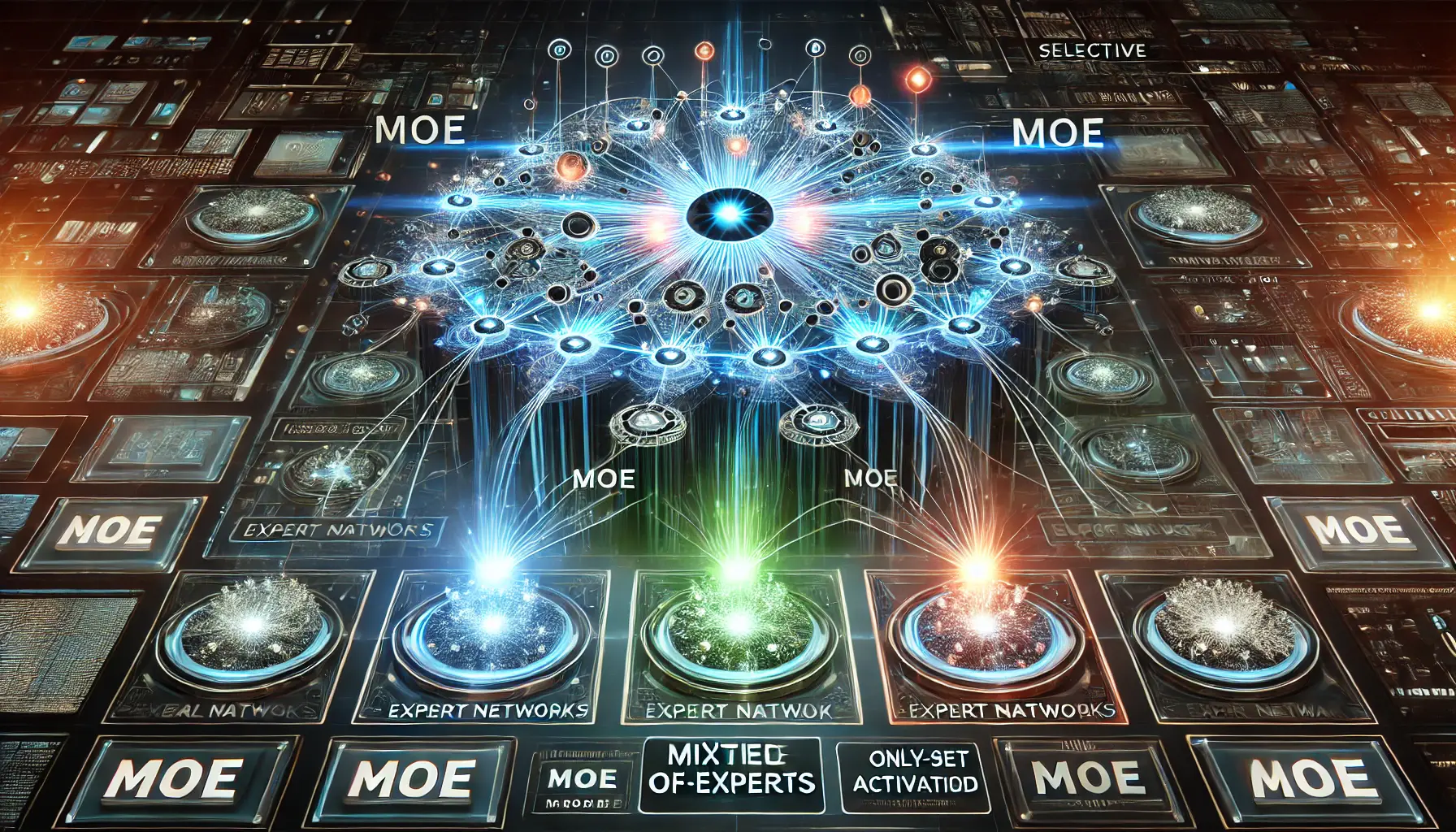
A sophisticated AI system illustrating the Mixture-of-Experts (MoE) architecture in action.
Mixture-of-Experts (MoE) Architecture
One of the main innovations of DeepSeek R1 is its Mixture-of-ExpertsA machine learning model architecture that divides tasks among multiple specialized expert networks to improve efficiency and accuracy. (MoE) architecture.
It integrates multiple expert networks within the model, ensuring that only a subset is active during any given task.
This selective activation allows the model to process complex queries efficiently while reducing computational costs without compromising performance.
For example, DeepSeek R1 consists of 671 billion parameters, but only 37 billion are active during inferenceThe process of using a trained AI model to generate predictions or responses based on input data., optimizing resource usage.
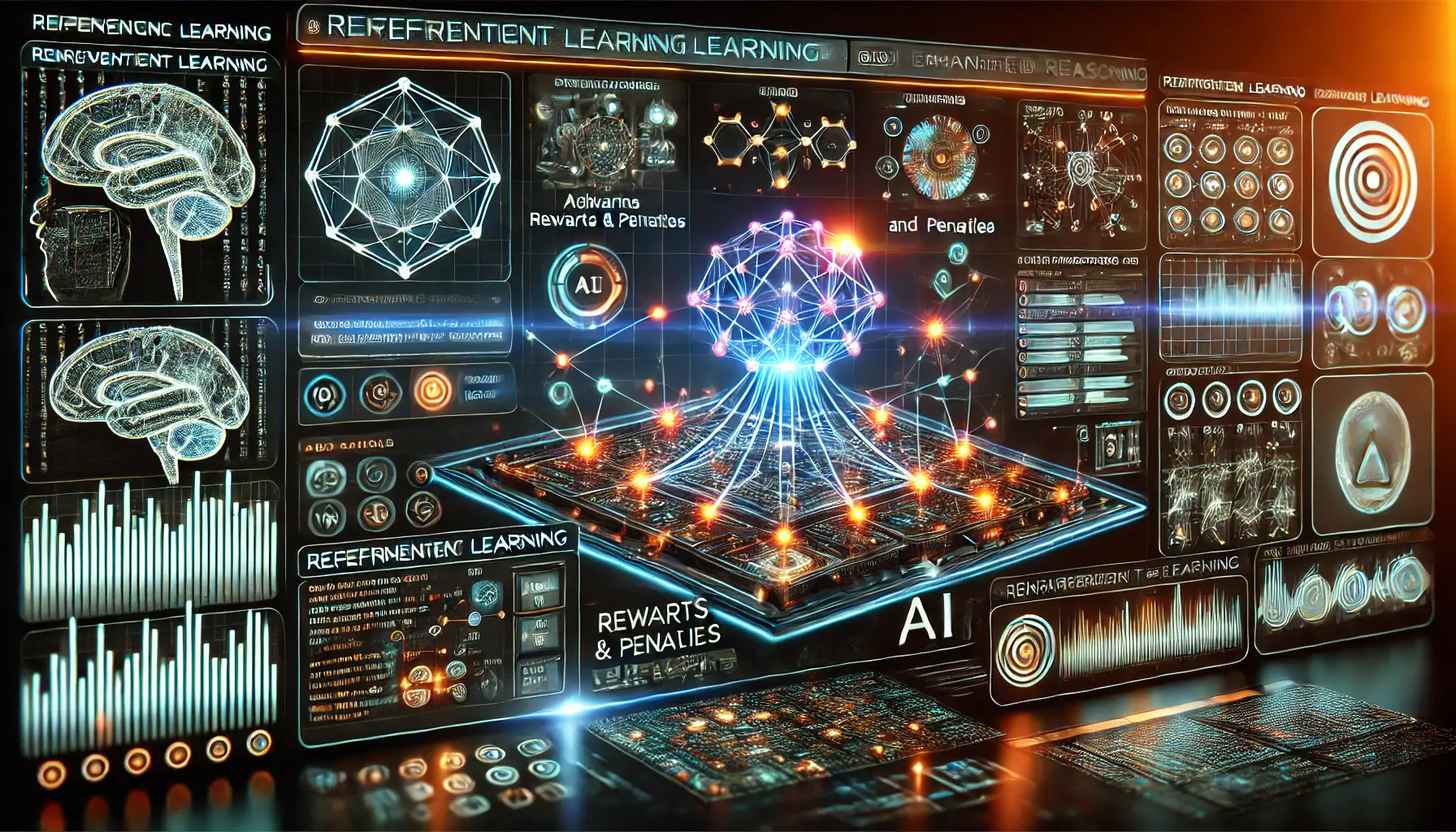
An advanced AI system visualizing reinforcement learning processes for enhanced reasoning.
Reinforcement Learning for Enhanced Reasoning
DeepSeek R1 employs reinforcement learningA type of machine learning where an AI model learns by receiving rewards or penalties based on its actions. techniques to improve its reasoning capabilities.
Through iterative training, the model learns to generate accurate and contextually relevant responses.
This approach enables the chatbot to handle complex tasks such as mathematical problem-solving and coding assistance more effectively.
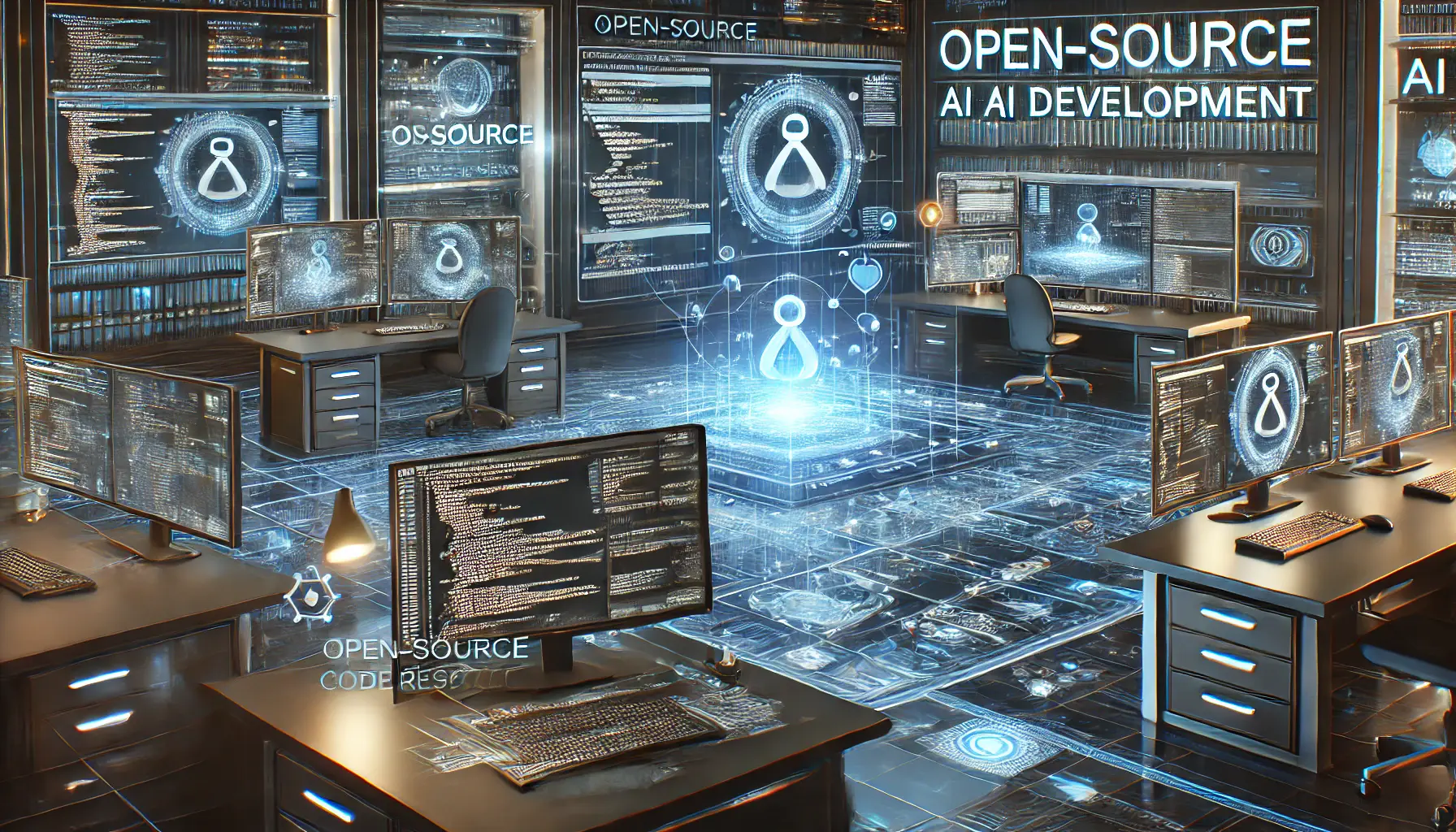
A futuristic open-source AI development setup emphasizing accessibility and transparency.
Open-Source Accessibility
As an open-source model, DeepSeek R1 provides developers with the ability to access, modify, and implement its code freely.
This openness fosters community-driven improvements and innovation, allowing customization for specific project requirements.
The transparency in the model’s architecture and training methodologies also enhances developers’ understanding and trust in the model.

An advanced AI system demonstrating Multi-Head Latent Attention (MLA) in action.
Multi-Head Latent Attention (MLA)
DeepSeek R1 incorporates Multi-Head Latent AttentionA mechanism in neural networks that helps models focus on relevant parts of an input to improve understanding and response generation. (MLA) mechanisms to enhance its language processing and generation capabilities.
This enables the model to attend to multiple parts of the input simultaneously, improving its understanding of context and subtle nuances in user queries.
As a result, the chatbot can deliver responses that are more accurate and contextually appropriate.
By leveraging these advanced features, developers can create chatbots that are not only intelligent and efficient but also highly user-friendly.
The combination of DeepSeek R1’s innovative architecture, learning methodologies, and open-source accessibility makes it one of the most powerful tools in AI-driven chatbot development.
DeepSeek R1 leverages Mixture-of-Experts (MoE) architecture, reinforcement learning, and Multi-Head Latent Attention (MLA) to deliver unparalleled AI performance.

An advanced AI environment for testing and deploying DeepSeek R1-powered chatbots.
Testing and Deploying Your DeepSeek R1-Powered Chatbot
After developing your chatbot with DeepSeek R1, it’s crucial to thoroughly test and deploy it effectively to ensure optimal performance and user satisfaction.
Let’s explore the best practices for testing and deploying your DeepSeek R1-powered chatbot.

An advanced AI testing environment for evaluating chatbot functionality and performance.
Testing Your Chatbot
Comprehensive testing is essential to identify and rectify potential issues before deployment.
Consider the following steps:
- Functional Testing: Ensure all the features of your chatbot work as expected. Test various user inputs to verify appropriate responses.
- Performance Testing: Assess the chatbot’s response time and stability under different load conditions to ensure it can handle user interactions efficiently.
- Security Testing: The chatbot must be tested for its resilience against potential threats, such as malicious inputs and attempts to bypass safety measures. Recent studies have exposed vulnerabilities in AI models, including DeepSeek R1, where safety guardrails failed under certain conditions. Addressing these concerns during testing is crucial.
- User Acceptance Testing: Gather feedback from real users to make necessary improvements and ensure the chatbot meets user expectations.
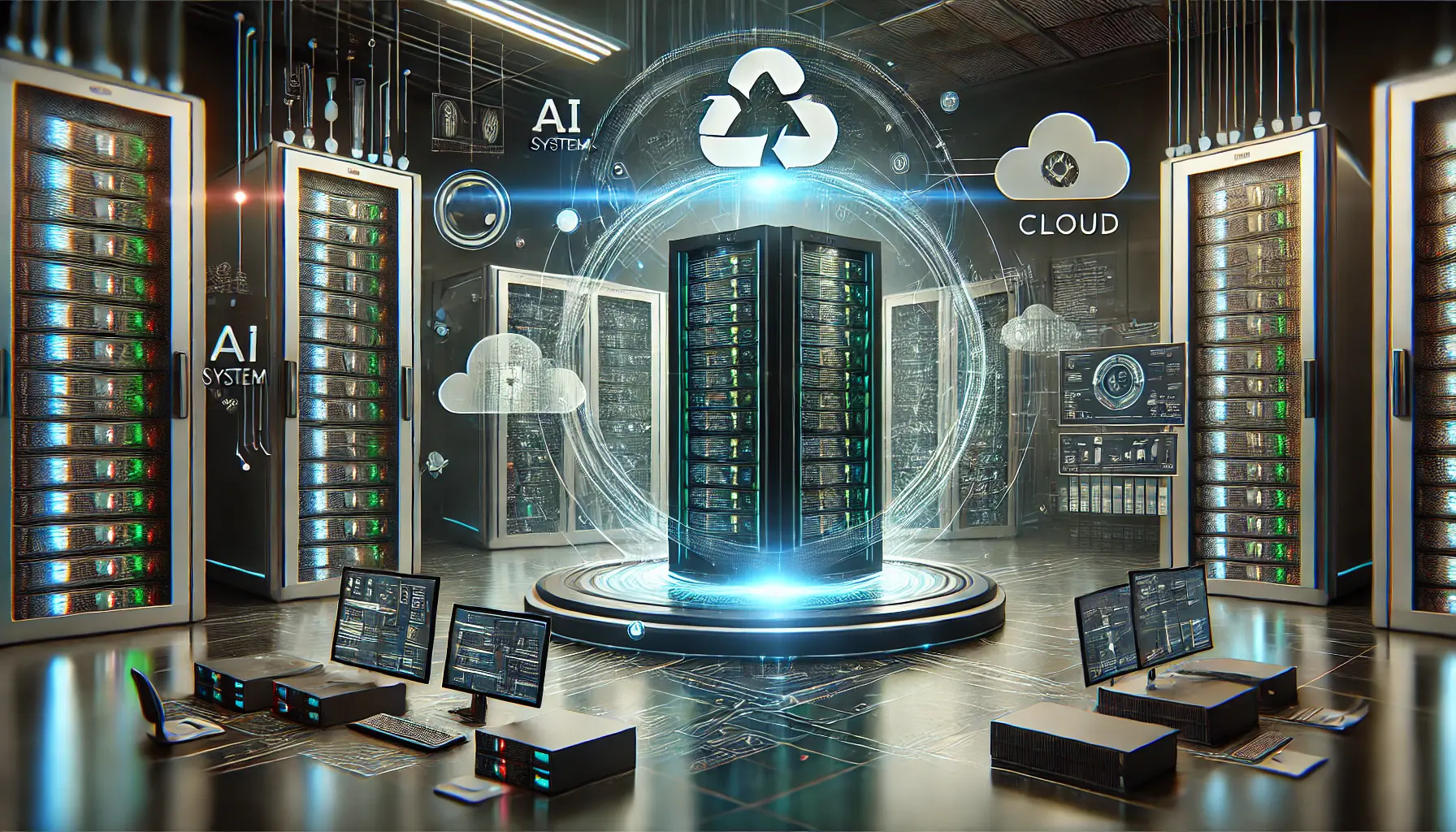
An advanced AI deployment environment for deploying chatbots at scale.
Deploying Your Chatbot
Once testing is complete, proceed with deployment using the following guidelines:
- Choose the Right Hosting Environment: Select a suitable hosting platform based on your requirements. Options include cloud services like AWS, Azure, or Digital Ocean, each offering specific advantages for deploying AI models.
- Ensure Scalability: Configure deployment to handle varying user loads, leveraging auto-scaling features on cloud platforms to maintain optimal performance during peak usage times.
- Monitor Performance: Implement monitoring tools to track the chatbot’s performance post-deployment. Proactively identifying and resolving issues ensures a seamless user experience.
- Regular Updates: Keep your chatbot updated with the latest versions of DeepSeek R1 and other dependencies. Regular updates enhance performance, security, and introduce new features.
By meticulously testing and thoughtfully deploying your DeepSeek R1-powered chatbot, you can deliver a reliable and engaging experience to your users, harnessing the full potential of advanced AI technology.
Thorough testing, including security evaluations, is crucial to ensuring your chatbot performs reliably and remains resilient against potential threats.

A high-tech workspace symbolizing the final stage of chatbot development with DeepSeek R1.
Final Thoughts on Developing Chatbots with DeepSeek R1
Building intelligent chatbots with DeepSeek R1 presents a remarkable opportunity for businesses and developers to create advanced, efficient, and engaging conversational AI solutions.
From understanding user intent to deploying the chatbot effectively, each phase of development plays a crucial role in ensuring a seamless experience for users.
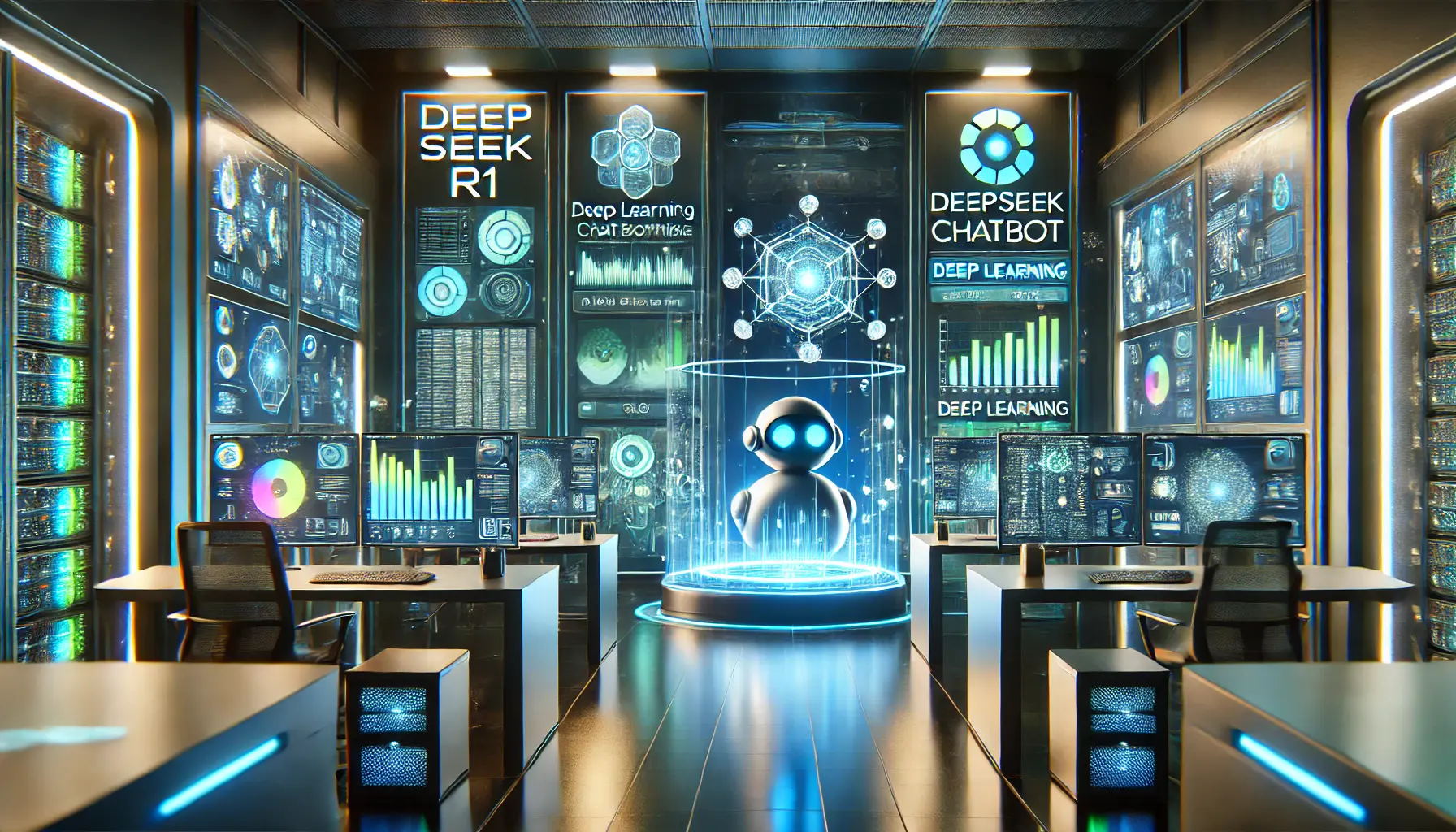
A futuristic AI environment summarizing key takeaways from DeepSeek R1 chatbot development.
Key Takeaways from DeepSeek R1 Chatbot Development
DeepSeek R1 is unique in its advanced AI capabilities, making it an ideal model for chatbot development.
The major points covered in this guide include:
- Understanding DeepSeek R1: Advanced reasoning capabilities and an open-source framework provide flexibility in chatbot development.
- Setting Up for Success: Proper installation and configuration of DeepSeek R1 ensure an optimized environment for chatbot development.
- Designing Conversations: Leveraging Natural Language Understanding (NLU) helps create meaningful and context-aware interactions.
- Utilizing Advanced Features: Features such as the Mixture-of-Experts architecture and reinforcement learning enhance chatbot efficiency and accuracy.
- Testing and Deployment: Comprehensive testing, performance monitoring, and strategic deployment ensure chatbot stability and reliability.
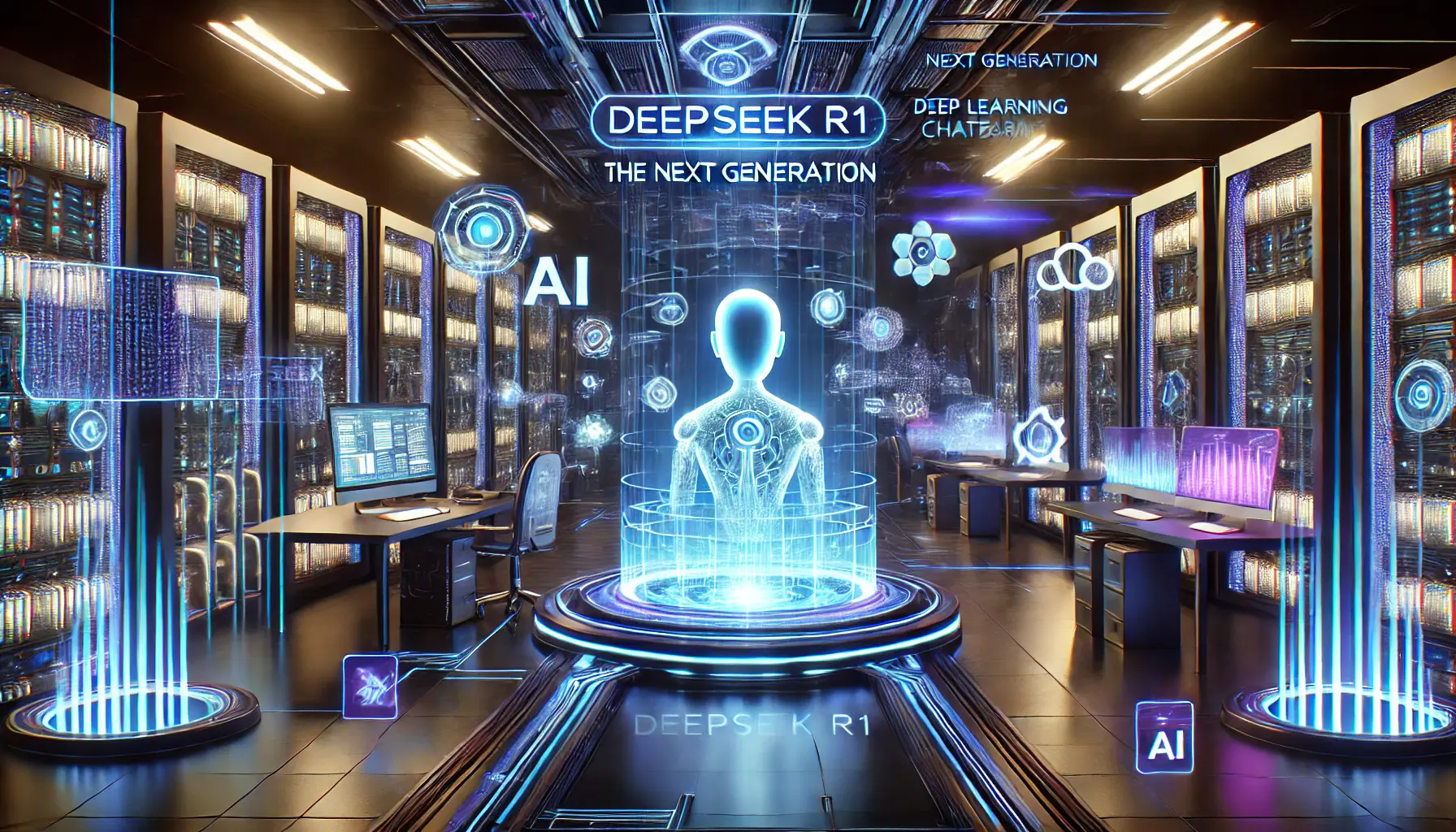
A high-tech AI environment depicting the future of AI chatbots with DeepSeek R1.
The Future of AI Chatbots with DeepSeek R1
As AI technology evolves, DeepSeek R1 will remain at the forefront of chatbot advancements.
Its combination of machine learning, adaptive reasoning, and open-source flexibility makes it a perfect fit for developers building the next generation of conversational AI.
To stay ahead in chatbot development, consider these future-focused strategies:
- Continuous Learning: Keep updating your chatbot with new data and fine-tuning techniques to enhance its conversational ability.
- Integration with Emerging Technologies: Explore integrations with voice recognition, AR/VR interfaces, and IoT for more immersive interactions.
- Ethical AI Practices: Ensure transparency, security, and user privacy while developing AI-powered chatbots using DeepSeek R1.

A high-tech AI environment illustrating the game-changing capabilities of DeepSeek R1 in chatbot development.
Why DeepSeek R1 is a Game-Changer
DeepSeek R1’s unique architecture and AI-driven improvements empower developers to create chatbots that not only communicate efficiently but also adapt to dynamic user needs.
With its advanced capabilities, businesses can elevate customer engagement, streamline operations, and provide intelligent automation solutions.
By embracing DeepSeek R1 for chatbot development, you are investing in a future where AI-powered conversations are more natural, insightful, and responsive than ever before.
By integrating DeepSeek R1 into chatbot development, businesses can enhance user interactions, automate workflows, and stay ahead in the AI-driven future.
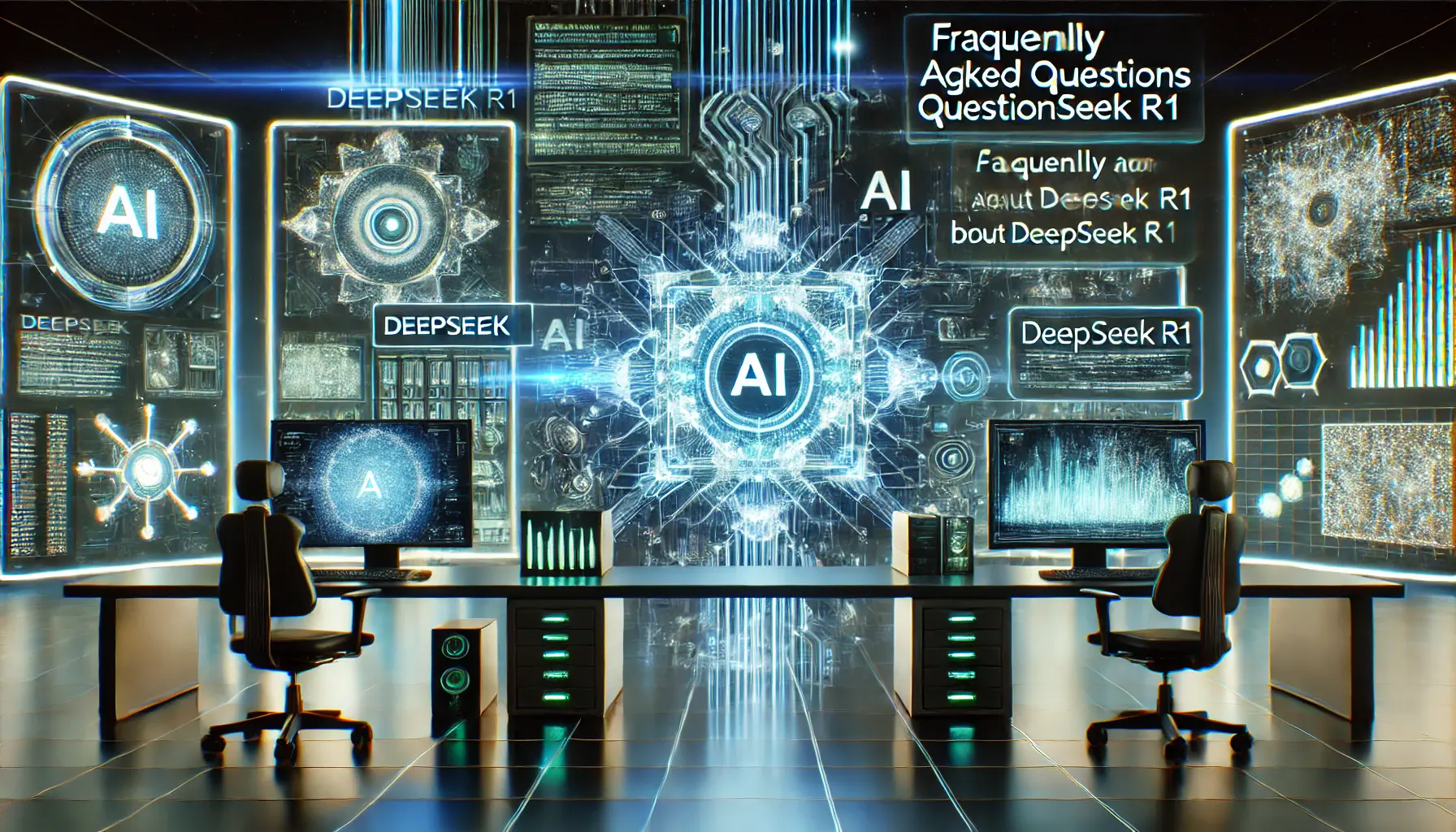
A high-tech AI workspace addressing frequently asked questions about DeepSeek R1.
DeepSeek R1: Frequently Asked Questions
DeepSeek R1 is an open-source AI model developed by the Chinese startup DeepSeek, designed for advanced reasoning tasks like mathematical problem-solving and coding assistance.
DeepSeek R1 utilizes a Mixture-of-Experts architecture, activating only a subset of its 671 billion parameters during inference, enhancing efficiency and reducing computational costs.
Yes, DeepSeek R1 is open-source and freely available for developers to access, modify, and implement in their projects.
Running DeepSeek R1 effectively requires a multi-core processor, a high-performance GPU (preferably NVIDIA-based with CUDAA parallel computing platform and application programming interface model developed by NVIDIA for GPU acceleration. support), at least 32 GB of RAM, and an SSD with at least 50 GB of free space.
DeepSeek R1’s advanced reasoning capabilities enable chatbots to understand complex user inputs, maintain contextual awareness, and provide accurate, contextually relevant responses.
DeepSeek R1 supports multiple programming languages, making it versatile for various coding assistance tasks.
As an open-source model, data handling practices depend on the implementation.
Developers should ensure compliance with data privacy regulations in their applications.
Yes, developers can fine-tune DeepSeek R1 on domain-specificRelating to a particular industry or area of expertise, often requiring specialized training data for AI models. data to enhance its performance for specialized applications.
While powerful, DeepSeek R1 may require substantial computational resources for optimal performance and may need fine-tuningThe process of further training an AI model on specific data to optimize its performance for a particular task. for specific tasks.
